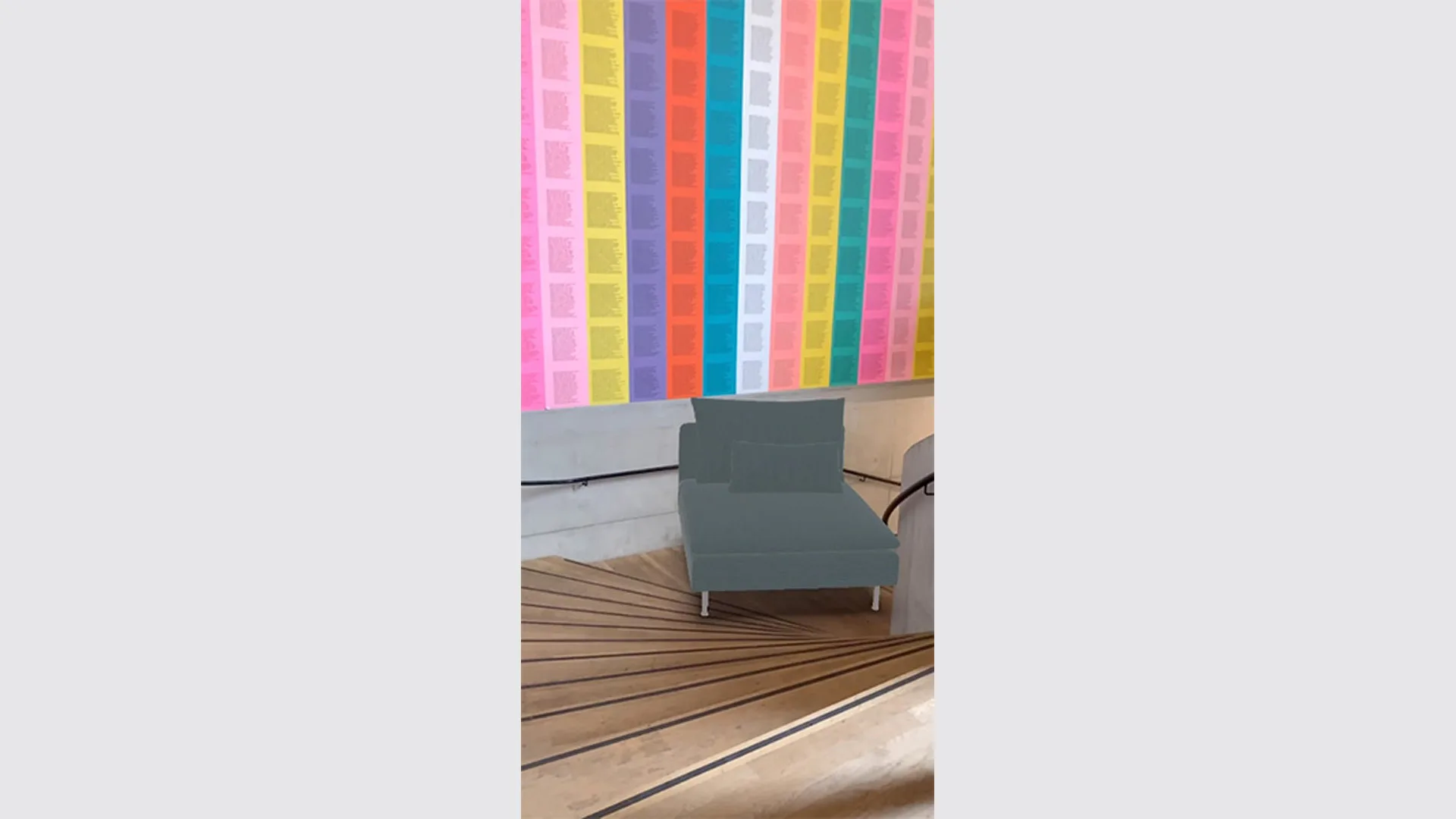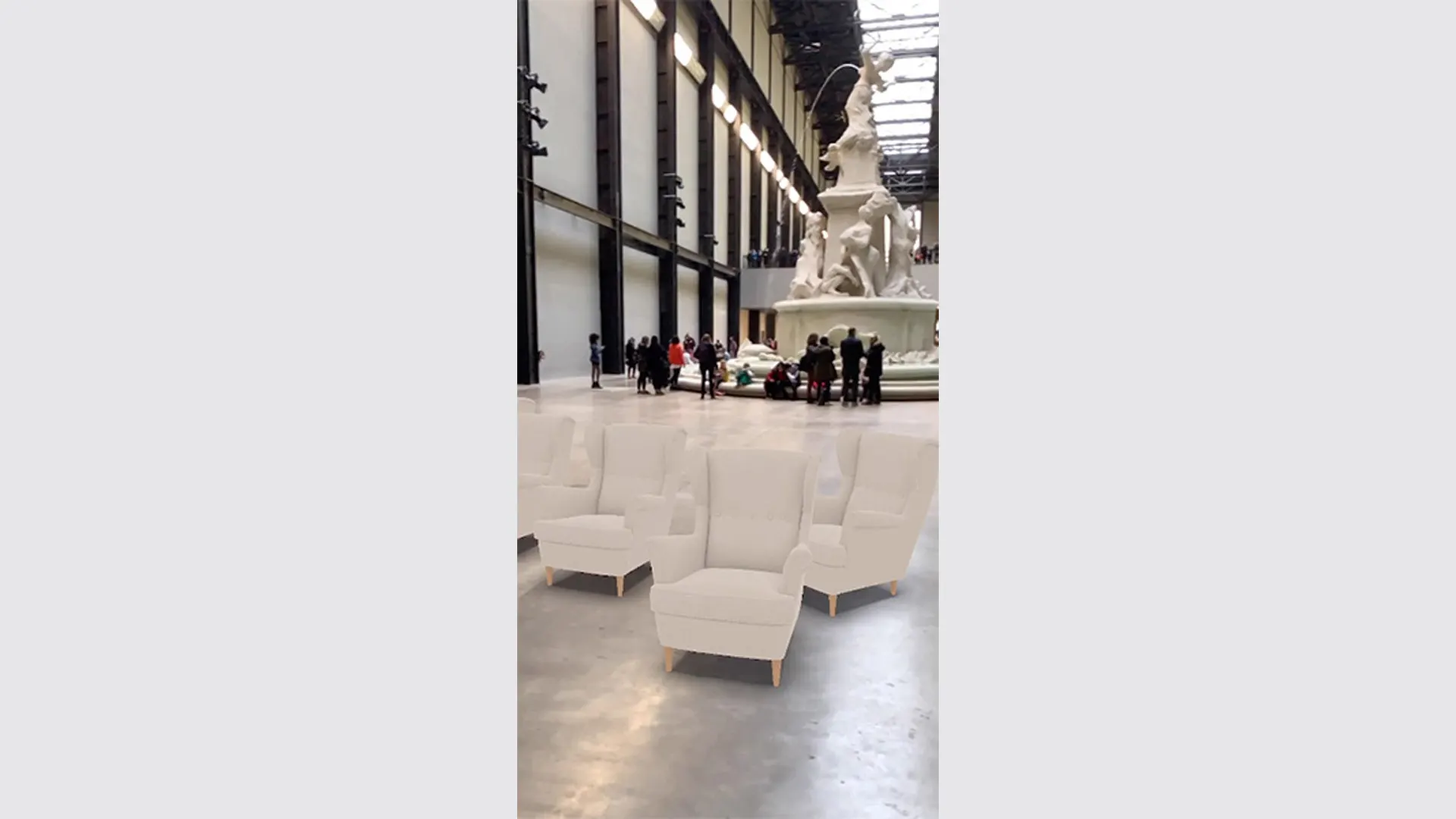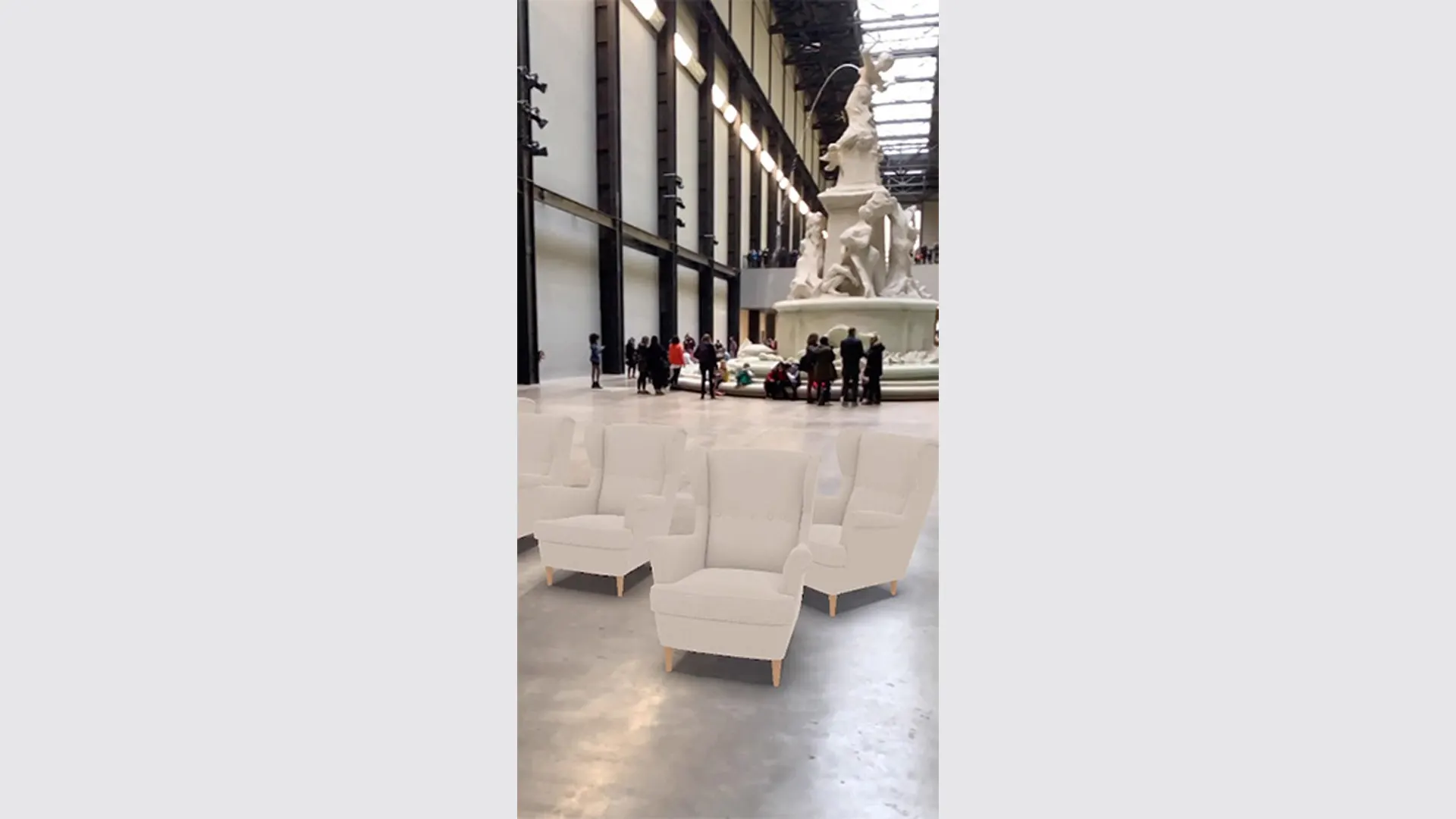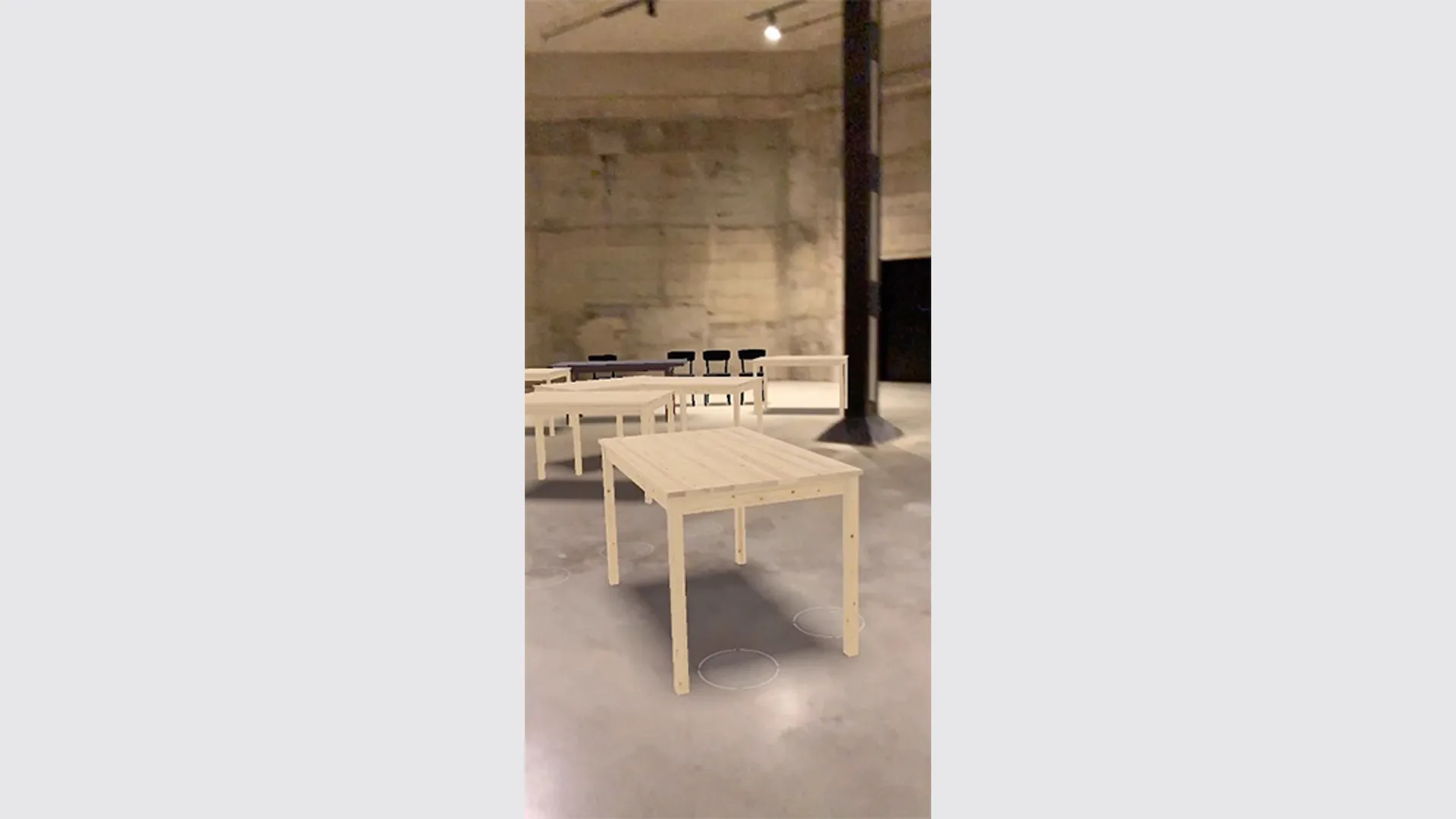Like many artists, Max Siedentopf dreams of one day being featured in the U.K.’s mecca of contemporary art, the Tate Modern. Like no other artist, he used Ikea’s augmented reality app to sneak his own art in.
In a project dubbed Imaginary Sculptures, Siedentopf—who is known for viral art like gag passport photos and cars souped up with cardboard—used Ikea Place to drop hundreds of virtual tables and chairs across the museum. “Some of my favorite artists such as Erwin Wurm, Roman Signer, or Elmgreen & Dragset use furniture for their sculptures,” Siedentopf says. “And seeing as I always wanted to have my own sculptures inside the Tate, the idea came really quickly when I tried out Ikea’s home decoration app for the first time.”
Siedentopf’s video is a lol-fest. He piles all sorts of virtual furnishings inside the stoic Tate, as he hijacks the institution’s tony art sensibilities with budget Swedish modern furniture. But if you watch long enough, some of the pieces feel perfectly at home. I found myself asking, is it really that odd to see a sole Scandinavian table in the middle of an otherwise empty concrete room? (Not really!) Is this catalog item actually art?
Siedentopf agrees that the context of a museum gives works a certain gravitas that can provide meaning all unto itself. “You immediately [perceive something] differently if you see it in a gallery or museum setting,” he says. “Some might even tape a banana to a wall.”
Artists have hijacked famous museums with augmented reality artworks before. In 2018, an app called MoMAR commandeered the MoMA’s Jackson Pollock room with invisible works you could only see through a smartphone. A year earlier, the Art Gallery of Ontario hosted a project to turn its classical paintings into augmented reality scenes. But the twist of using a stock Ikea app, downloadable by anyone, to pile virtual objects into a curated space is new. The project seems to tease how digital apps, and particularly the social media AR filters like those seen on Snapchat, could add wholly new, unintentional layers to a museum visit.
“I like the idea of it being graffiti. It opens up so many new doors and ideas to how you approach exhibitions and what is allowed inside,” says Siedentopf of these AR hacks. “In the future, museum and galleries can of course have special artists invite their special friends to see their AR art, but it will be tricky to control who else will put work into their space.”
Recognize your brand’s excellence by applying to this year’s Brands That Matter Awards before the early-rate deadline, May 3.







